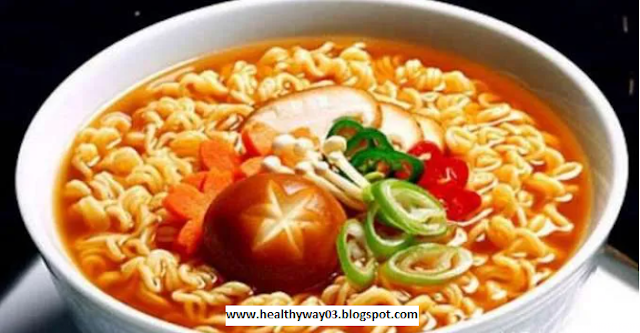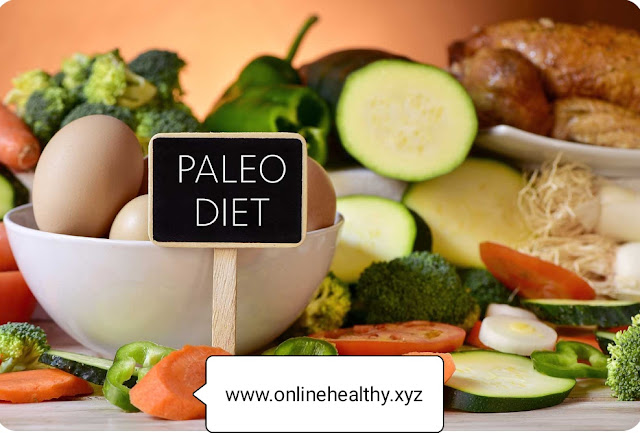Discover 7 Benefits of Avoiding Dinner That Will Make You Curious – Discover
Healthy - The benefits of avoiding dinner are the various benefits gained by not consuming food within a few hours of going to bed. This practice is generally done to maintain health and help lose weight.
Avoiding dinner has several important benefits. First, it can improve sleep quality by reducing indigestion and heartburn. Second, it can help lose weight by reducing overall calorie intake. Third, it can improve blood sugar levels by giving the body time to process insulin effectively.
There are several main topics that will be discussed in this article. First, we will discuss in depth the benefits of avoiding dinner, including the benefits for health and weight loss. Second, we will explore some effective strategies for avoiding dinner. Third, we will discuss some exceptions and situations where dinner may still be necessary.
Benefits of Avoiding Dinner
Avoiding dinner has many benefits, especially for health and weight loss. Here are the top 7 benefits of skipping dinner:
- Sleep better
- Lose weight
- Control blood sugar
- Reduce acid reflux
- Improve heart health
- Improve brain function
- Increase longevity
By skipping dinner, you give your body time to fully digest food and prepare for sleep. This can help improve sleep quality and reduce digestive disorders such as heartburn and acid reflux. Additionally, skipping dinner can help reduce overall calorie intake, which can lead to weight loss. Skipping dinner can also help control blood sugar levels by giving your body time to process insulin effectively. Overall, skipping dinner is a healthy habit that can provide many benefits to your health and well-being.
Sleep better
One of the top benefits of skipping dinner is that it can improve sleep quality. Eating late at night can cause indigestion and heartburn, which can make it difficult to get a good night's sleep. Additionally, eating dinner can leave you feeling full and uncomfortable, which can also interfere with sleep.
Conversely, skipping dinner can help you sleep better by giving your body time to fully digest food and prepare for sleep. When you go to bed on an empty stomach, your body can focus on rest and recovery, rather than digestion.
Several studies have shown that skipping dinner can improve sleep quality. For example, a study published in the journal Sleep found that people who skipped dinner for 3 hours before bed experienced improved sleep quality and reduced symptoms of indigestion. Another study published in the journal Appetite found that people who skipped dinner for 4 hours before bed experienced improved sleep quality and lower morning blood sugar levels.
Overall, skipping dinner is a healthy habit that can provide many benefits, including improving sleep quality. If you have trouble sleeping, skipping dinner may be a strategy worth trying.
Weight Loss
Another benefit of skipping dinner is that it can help you lose weight. When you skip dinner, you reduce your overall calorie intake, which can lead to weight loss. Additionally, skipping dinner can help regulate insulin levels, which can help increase fat burning.
Several studies have shown that skipping dinner can help you lose weight. For example, a study published in the journal “Obesity” found that people who skipped dinner for 12 weeks lost more weight than a control group. Another study published in the journal “The American Journal of Clinical Nutrition” found that people who skipped dinner for 8 weeks experienced decreased insulin levels and increased fat burning. Overall, skipping dinner is an effective strategy for weight loss. If you are trying to lose weight, skipping dinner may be a strategy worth trying.
Controlling blood sugar
Another benefit of skipping dinner is that it can help control blood sugar. When you eat, your blood sugar levels rise. If you eat late at night, your blood sugar levels may remain high throughout the night, which can lead to insulin resistance and type 2 diabetes.
Conversely, skipping dinner can help keep your blood sugar levels stable. When you go to bed on an empty stomach, your blood sugar levels naturally drop. This can help improve insulin sensitivity and reduce the risk of insulin resistance and type 2 diabetes.
Several studies have shown that skipping dinner can help control blood sugar. For example, a study published in the journal “Diabetes Care” found that people who skipped dinner for 12 weeks experienced lower fasting blood sugar levels and HbA1c (a measure of long-term blood sugar control).
Overall, skipping dinner is an effective strategy for controlling blood sugar. If you are at risk for diabetes or are struggling to control your blood sugar, skipping dinner may be a strategy worth trying.
Reducing acid reflux
Eating late at night can cause acid reflux, a condition where stomach acid flows back into the esophagus. This can cause symptoms such as heartburn, chest pain and coughing. Avoiding dinner can help reduce acid reflux by giving your stomach time to empty and reducing pressure on the lower esophageal sphincter, a muscle that helps prevent stomach acid from flowing back into the esophagus.
Body position - Lying down after eating can increase your risk of acid reflux. Avoiding dinner can help reduce this risk by giving your food time to digest before you lie down.
Types of food - Some types of food are more likely to cause acid reflux than others. Fatty, spicy and acidic foods can irritate the lining of the esophagus and make acid reflux worse. Avoiding these foods, especially before bed, can help reduce symptoms.
Portion size - Eating large meals can increase pressure on the stomach and encourage acid reflux. Eating smaller meals, especially in the evening, can help reduce the risk of acid reflux.
Alcohol consumption - Alcohol can relax the lower esophageal sphincter, making it easier for stomach acid to flow back into the esophagus. Avoiding alcohol, especially before bed, can help reduce the risk of acid reflux.
Overall, avoiding dinner can be an effective strategy for reducing acid reflux. By avoiding eating late at night, you can give your stomach time to empty and reduce pressure on the lower esophageal sphincter, reducing the risk of stomach acid flowing back into the esophagus.
Read More: Diet Temptation, Can You Eat Instant Noodles While Dieting?
Improves heart health
Skipping dinner can provide several important heart health benefits. One of the main benefits is that it can help lower bad cholesterol (LDL) and increase good cholesterol (HDL).
- Lowers bad cholesterol (LDL)
LDL (“bad”) cholesterol can build up in the walls of arteries, causing them to narrow and harden. This can increase the risk of heart disease, such as heart attack and stroke. Skipping dinner can help lower LDL cholesterol by reducing your intake of saturated and trans fats.
- Increases good cholesterol (HDL)
HDL (“good”) cholesterol helps remove bad cholesterol from the arteries and transport it back to the liver for disposal. Skipping dinner can help raise HDL cholesterol by increasing the production of a protein called apolipoprotein A-1, which is a major component of HDL cholesterol.
- Reduces inflammation
Chronic inflammation is a major risk factor for heart disease. Skipping dinner can help reduce inflammation by lowering levels of inflammatory cytokines, which are proteins released by the immune system in response to injury or infection.
- Improves blood vessel function
Eating dinner can cause vasoconstriction, or narrowing of the blood vessels. This can increase blood pressure and put strain on the heart. Avoiding dinner can help improve blood vessel function by increasing the production of nitric oxide, a molecule that helps widen blood vessels.
Overall, avoiding dinner can provide several important benefits for heart health. By lowering cholesterol levels, improving blood vessel function, and reducing inflammation, avoiding dinner can help reduce the risk of heart disease and improve overall heart health.
Read More: 6 Breakfast Menu For People With High Cholesterol
Improves brain function
In addition to the physical benefits, avoiding dinner can also provide several cognitive benefits, including improved brain function.
- Improves memory and learning
Several studies have shown that avoiding dinner can improve memory and learning. For example, a study published in the journal “Neurobiology of Learning and Memory” found that rats who avoided dinner performed better on memory tests than rats who ate dinner. Another study published in the journal “Appetite” found that people who avoided dinner for 8 weeks experienced improvements in working memory and long-term memory.
- Improves concentration and alertness
Eating dinner can cause drowsiness and lethargy. Conversely, avoiding dinner can help improve concentration and alertness by lowering blood sugar levels and increasing levels of hormones such as norepinephrine and dopamine.
- Reduces the risk of neurodegenerative diseases
Several studies have shown that avoiding dinner can help reduce the risk of neurodegenerative diseases, such as Alzheimer's and Parkinson's disease. For example, a study published in the journal "Neurology" found that people who avoid dinner have a lower risk of Alzheimer's disease than people who eat dinner.
Overall, avoiding dinner can provide several cognitive benefits, including improved memory, learning, concentration, and alertness. In addition, avoiding dinner can also help reduce the risk of neurodegenerative diseases.
Extends life
One potential benefit of avoiding dinner is that it can help extend life. This is because avoiding dinner can provide several health benefits that have been discussed previously, such as improving heart health, reducing inflammation, and improving brain function. These benefits can help reduce the risk of death from chronic diseases, such as heart disease, stroke, and cancer.
In addition, avoiding dinner can also help regulate the body's circadian rhythm, which is the 24-hour cycle that regulates sleep, eating, and hormones. Disrupting your circadian rhythm has been linked to a variety of health problems, including cardiovascular disease, diabetes, and cancer. Avoiding dinner may help keep your circadian rhythm regular, which may provide long-term health benefits. While more research is needed to confirm the link between avoiding dinner and longevity, early evidence suggests that avoiding dinner may be an effective strategy for improving health and longevity. By giving your body time to rest and repair itself, avoiding dinner may help reduce your risk of chronic disease and keep your body functioning optimally throughout life.



























